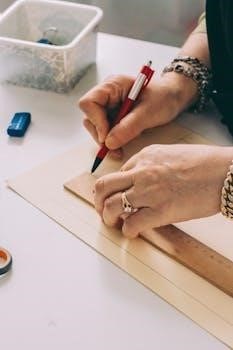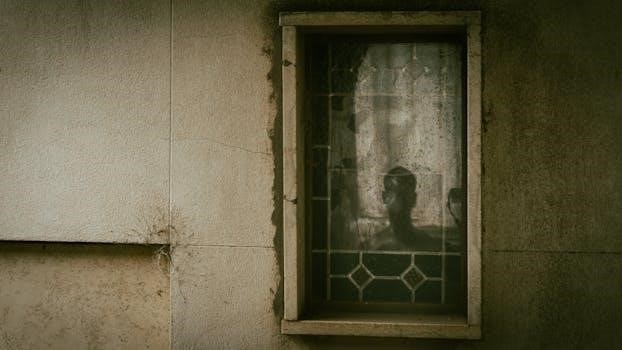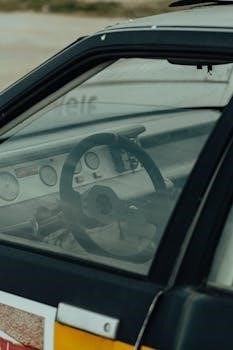Weber Spirit 210 Manual⁚ A Comprehensive Guide
This comprehensive guide provides detailed instructions and essential information for the Weber Spirit E-210 gas grill. It covers assembly, operation, maintenance, troubleshooting and safety precautions. Get the most from your grill!
The Weber Spirit E-210 is a popular gas grill known for its compact size, efficient performance, and user-friendly design. Designed for outdoor cooking, it offers a convenient and reliable grilling experience. This section introduces you to the Weber Spirit E-210, highlighting its key features and benefits. Whether you’re a seasoned grill master or a beginner, understanding the basics of this grill will enhance your grilling adventures.
The Spirit E-210 is perfect for small families, apartments, or anyone with limited outdoor space. Its two stainless steel burners provide ample heat for various cooking styles, from searing steaks to slow-cooking ribs. This guide will help you explore the capabilities of the Weber Spirit E-210.
Overview of Features and Specifications
The Weber Spirit E-210 gas grill boasts several features that make it a standout choice for grilling enthusiasts. At its core are two stainless steel burners, delivering a total of 26,500 BTUs of heating power. This ensures consistent and even heat distribution across the 360 square inches of cooking area. The grill also includes porcelain-enameled, cast-iron cooking grates, known for their excellent heat retention and durability.
The Spirit E-210 features an electronic ignition system for quick and reliable start-ups. A built-in thermometer allows precise temperature monitoring. The grill also includes Flavorizer bars that vaporize drippings, creating flavorful smoke. Its compact design and foldable side tables make it ideal for smaller patios or balconies. The grill operates on either liquid propane (LP) or natural gas (NG), depending on the model.

Assembly Instructions
Assembling your Weber Spirit 210 requires careful attention to detail. Follow the step-by-step guide included in the manual. Ensure all parts are correctly installed for safe and optimal performance.
Step-by-Step Assembly Guide
The assembly of your Weber Spirit E-210 grill can be simplified by following these detailed steps. Begin by unpacking all components and verifying against the parts list in your manual. Attach the cart frame, ensuring stability before proceeding. Next, mount the grill body onto the frame, securing it with the appropriate hardware. Install the burners, carefully connecting them to the gas manifold.
After the burners are in place, attach the cooking grates and flavorizer bars, ensuring they sit properly within the grill. Connect the gas tank, following safety guidelines for propane or natural gas models. Finally, attach any remaining accessories like side tables and the thermometer. Always double-check all connections for tightness and stability. Refer to your manual for diagrams and specific torque settings. Testing for leaks is essential before use.
Tools Required for Assembly
Assembling your Weber Spirit E-210 grill efficiently requires having the correct tools on hand. A Phillips head screwdriver is essential for most of the screw attachments throughout the assembly process. You will also need an adjustable wrench or a set of wrenches to tighten bolts and nuts securely, preventing gas leaks.
Consider using a socket set with various sizes for added convenience and torque control. A pair of pliers can be helpful for gripping small parts or manipulating wires. Safety glasses are recommended to protect your eyes from debris during assembly. A level ensures the grill sits evenly on the patio. Optionally, a rubber mallet can assist in fitting some parts together without damaging them. Finally, keep a utility knife handy for opening packaging and trimming any excess material.

Operating Instructions
Mastering your Weber Spirit 210 involves understanding proper lighting, temperature management, and various cooking techniques. This section will guide you through each step for optimal grilling results.
Lighting Procedures (LP and Natural Gas Models)
Properly lighting your Weber Spirit 210 is crucial for safe and efficient grilling. The procedure varies slightly depending on whether you have a Liquid Propane (LP) or Natural Gas model. Before starting, ensure all connections are secure and free of leaks, as described in the safety section. For LP models, open the grill lid and then fully open the LP tank valve. Next, turn one burner control knob to the “start/high” position, then press the igniter button. If the burner doesn’t light within a few seconds, turn the knob off, wait five minutes for any accumulated gas to dissipate, and try again. If it still fails, use a lit match, carefully inserting it near the burner while turning the control knob to “start/high.”
For Natural Gas models, ensure the gas supply valve is fully open. Then follow the same procedure as with the LP model⁚ turn one burner control knob to “start/high” and press the igniter. If it does not light, repeat the process, waiting for gas to dissipate before re-attempting. Always keep the lid open during ignition to prevent gas buildup. Once a burner is lit, light the others by turning their respective control knobs to the “start/high” position.
Temperature Control and Cooking Techniques
Mastering temperature control is essential for achieving perfectly cooked meals on your Weber Spirit 210. The grill’s two burners offer versatility in managing heat zones. For high-heat searing, use both burners on high, preheating the grill for 10-15 minutes until it reaches 500-600°F. This is ideal for steaks and burgers, creating a flavorful crust. For indirect cooking, light only one burner, keeping the other off. Place food on the unlit side, closing the lid to circulate heat. This method is perfect for roasting chicken or cooking larger cuts of meat, preventing burning while ensuring even cooking.
Lower temperatures, around 300-350°F, are suitable for more delicate items like fish or vegetables. Adjust burner settings accordingly, using a grill thermometer to monitor internal temperature. Experiment with different configurations to find what works best for your desired results. Remember that external factors, such as wind and ambient temperature, can influence grill temperature, so adjust accordingly. Always preheat your grill before cooking and use proper cooking techniques to achieve consistent and delicious results.

Maintenance and Troubleshooting
Regular maintenance ensures the Weber Spirit 210 performs optimally and extends its lifespan. This section covers cleaning, inspection, troubleshooting common issues such as uneven heating, and replacing worn parts like burners and igniters.
Cleaning and Inspection Procedures
To maintain your Weber Spirit E-210 grill and ensure safe operation, regular cleaning and inspection are essential. Begin by disconnecting the propane tank or natural gas line. Allow the grill to cool completely before starting any cleaning procedures.
Remove the cooking grates and Flavorizer bars. Use a grill brush to scrub away any food residue from the grates. For stubborn buildup, soak the grates in warm, soapy water before scrubbing. Inspect the Flavorizer bars for damage or excessive wear, replacing them if necessary.
Clean the interior of the grill body by scraping away grease and debris with a putty knife or scraper. Remove the grease tray and empty it into a disposable container. Wash the grease tray with warm, soapy water to remove any remaining grease.
Inspect the burner tubes for clogs or damage. Use a pipe cleaner or wire brush to clear any obstructions in the burner ports. Check the igniter system to ensure it is functioning correctly. Clean the exterior of the grill with a mild detergent and water. Rinse thoroughly and dry with a clean cloth.
Troubleshooting Common Issues (e.g., Uneven Heating, Low Flame)
Experiencing issues with your Weber Spirit E-210? Let’s troubleshoot common problems. Uneven heating can often be attributed to clogged burner tubes. Inspect the burner ports and clean them with a wire brush or pipe cleaner to ensure proper gas flow. Another cause might be uneven distribution of Flavorizer bars; ensure they are correctly positioned.
A low flame could indicate low propane levels or a malfunctioning regulator. Check the propane tank and refill if necessary. If the problem persists, inspect the regulator hose for kinks or damage, and replace it if needed. Spider webs or insect nests in the burner tubes can also restrict gas flow, leading to a low flame. Clean the burner tubes thoroughly.
If the igniter fails to light the grill, check the battery and replace it if necessary. Ensure the igniter wire is properly connected to the burner. If these steps don’t resolve the issue, the igniter module may need replacement.
Replacing Parts (Burners, Igniter)
Replacing worn parts can extend the life of your Weber Spirit E-210. To replace the burners, first, ensure the grill is cool and the gas is turned off. Remove the cooking grates and Flavorizer bars. Detach the control panel by removing the knobs and screws. Carefully lift off the control panel to access the burners. Disconnect the burners from the gas valves and remove them. Install the new burners, ensuring they are securely connected to the gas valves. Reassemble the control panel, Flavorizer bars, and cooking grates;
To replace the igniter, locate the igniter module, usually behind the control panel. Disconnect the igniter wire from the burner. Remove the old igniter module and install the new one. Connect the igniter wire to the burner. Test the igniter to ensure it sparks correctly. Always use genuine Weber replacement parts for optimal performance.

Safety Precautions
Prioritize safety when using your Weber Spirit 210. Follow gas leak detection procedures, handle propane tanks safely, and maintain a safe grilling environment. Prevent accidents and enjoy worry-free cooking.
Gas Leak Detection and Prevention
Gas leak detection is crucial for safe operation. Before each use, inspect all gas connections, including the hose, regulator, and tank valve. Apply a soapy water solution to these connections. If bubbles appear, there’s a leak. Immediately turn off the gas supply and tighten the connections. If the leak persists, replace the faulty part;
Never use a flame to check for leaks. Store propane tanks upright and away from the grill. When not in use, disconnect the tank and store it in a well-ventilated area. Regularly inspect the hose for cracks or damage, replacing it if necessary. Ensure proper ventilation around the grill during operation.
If you smell gas, immediately shut off the gas supply, extinguish any open flames, and move away from the area. Contact a qualified gas technician to inspect and repair the grill before further use. Preventative maintenance is key to avoiding gas leaks and ensuring safe grilling.
Safe Handling of Propane Tanks
Propane tanks require careful handling to prevent accidents. Always store tanks upright in a well-ventilated area, away from direct sunlight, heat sources, and flammable materials. Never store spare propane tanks under or near the grill. When connecting or disconnecting a propane tank, ensure the grill is turned off, and there are no open flames nearby.
Inspect the tank for rust, dents, or damage before each use. If the tank appears compromised, do not use it; take it to a qualified propane dealer for inspection. When transporting a propane tank, secure it properly to prevent rolling or shifting. Never leave a propane tank unattended in a vehicle for extended periods, especially in hot weather.
When connecting the regulator, ensure the connection is tight and secure. Avoid over-tightening, as this can damage the valve. If you smell gas, immediately disconnect the tank and check for leaks. Proper handling and storage of propane tanks are essential for safe grilling.

